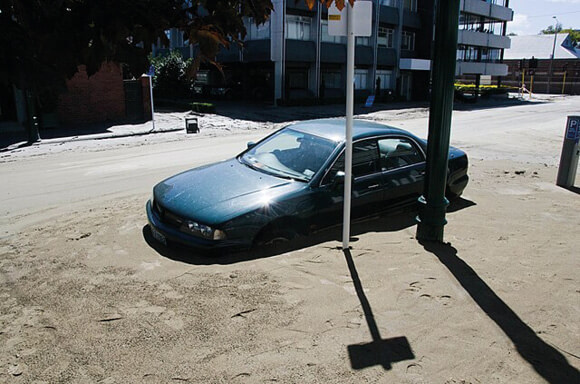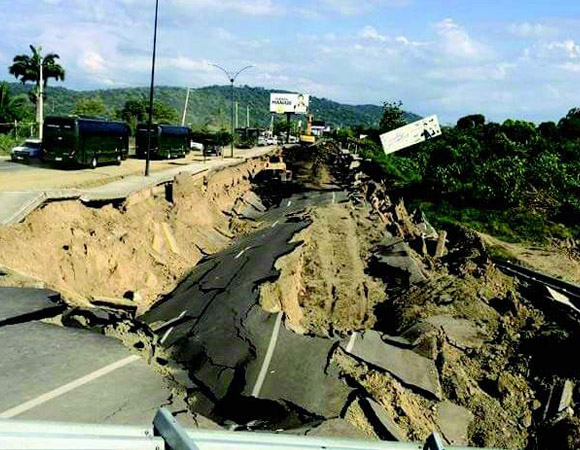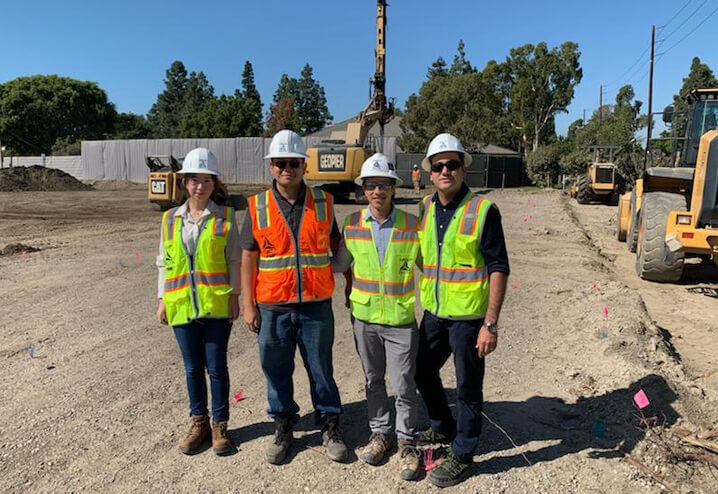What Is Liquefaction?
Understanding Soil Liquefaction and How to Mitigate It
Soil liquefaction remains one of the most destructive geohazards facing civil and geotechnical engineers today. When triggered, it can compromise foundations, severely damaging or even destroying structures. Project sites with liquefiable soils present can be deemed unbuildable without costly remediation. Understanding how and why liquefaction occurs—and more importantly, how to mitigate it effectively—is crucial for the long-term performance and safety of infrastructure projects.
If you’re looking for something in particular, use the links below to navigate straight to it:
What Is Liquefaction?
Soil liquefaction is a phenomenon that occurs when saturated, loose, granular soils temporarily lose strength and behave like a liquid when subjected to cyclic stress, typically from seismic activity or dynamic loading. This is because, when saturated soils are subjected to cyclic loading, pore water pressure increases as soil grains try to rearrange. If the loading is applied faster than drainage can occur, the water pressure can equal or exceed the overburden pressure, causing the soil to behave like a liquid. As the effective stress on the soil grains drops to zero, this causes the partial or complete loss of strength in the soil, and the ground can no longer support structures. The resulting settlement, which can be dramatic, causes structural damage, tilting, or even destroys affected structures.

Where Does Liquefaction Occur?
Liquefaction can occur anywhere where loose, sandy soils, below the groundwater table, are subjected to cyclic loading. These conditions most often occur in coastal or river valley regions within seismically active zones.
Well-known regions with high liquefaction risk include parts of California, the Pacific Northwest, Alaska, and areas along the Mississippi River in the New Madrid Seismic Zone.
Other causes of cyclic loading such as heavy construction, pile driving, blasting, or the application of vibratory loads can also induce localized liquefaction.
Why It Matters
Earthquake-induced liquefaction is particularly dangerous because it occurs without warning and affects large areas simultaneously. The consequences can be catastrophic for both new and existing structures, and especially problematic when critical facilities like schools, hospitals, bridges, and pipelines are affected.
Historical Liquefaction Example
The potentially devastating effects of soil liquefaction were brought into the global spotlight by the 2011 earthquake that occurred in Christchurch, New Zealand. Widespread liquefaction caused massive damages to the city and killed 185 people.
.jpg)
Potential Liquefaction Hazards
Understanding the liquefaction potential of a site is critical during the planning and design stages of a project. Tools such as liquefaction hazard maps, soil data such as SPT and CPT data, grain size analysis, and seismic risk assessments are valuable resources for engineers to quantify risk.
For new construction: Liquefaction mitigation should be incorporated into foundation design and site preparation.
How Geopier Fits In
As an industry leader in ground improvement, Geopier provides engineered systems specifically designed to address liquefaction hazards. These systems increase bearing capacity, densify soil, and mitigate excess pore pressure buildup—increasing the ability of structures to perform during liquefaction events.
Geopier Rammed Aggregate Pier® (RAP) Systems strengthen soil and reduces liquefaction risk by densifying loose granular layers and reinforcing the soil matrix.
Project Summary: Boca de Briceño Approach Embankment
Location: Briceño, Ecuador
Geopier has analyzed many cases to develop targeted ground improvement strategies that reduce liquefaction risk. A prime example is a bridge approach embankment project undertaken by Geopier in Briceño, Ecuador, that effectively mitigated liquefaction during an earthquake in April of 2016.

The Challenge: The project consisted of providing liquefaction mitigation and increasing the global stability of an 800-meter-long bridge embankment at the Boca de Briceño River. Subsurface conditions showed liquefiable silty sand at depths of 2 to 4 meters.
The Solution: The approach embankment was proposed to be 4 to 6 meters in height and was constructed in 2011 and 2012. The foundation soils at the approach embankment were reinforced with Rammed Aggregate Impact® Piers (RAPs) installed under the entire footprint of the approach embankment to provide liquefaction mitigation and increased global stability. More than 6,000 Impact® RAP elements were installed.
Earthquake Performance: On April 16th, 2016, a 7.8 magnitude earthquake occurred in Muisne (about 112 km from the project site). Ground motions between 0.37 to 0.52g were recorded adjacent to the project site. A nearby bridge embankment in Mejia, constructed over a similar soil profile and located about 50 km from the Briceño bridge, experienced catastrophic failure. In comparison, the Briceño bridge experienced only negligible settlements and surficial cracks in the asphalt roadway that were not substantial enough to disrupt the traffic flow. Sand boils were observed adjacent to the Briceño bridge site, which indicates that the unreinforced soils at the site experienced liquefaction during the earthquake event. The minimal damage to the Briceño embankment indicates that the soils reinforced with Rammed Aggregate Piers did not experience significant liquefaction. Learn more about this project.
Take Action against Liquefaction
When it comes to liquefaction, you want assurance that your project meets the highest ground improvement standards. We work with geotechnical and structural engineers to determine the best approach to mitigate liquefaction according to the specific project needs. Contact Geopier to learn how our proven ground improvement systems can reduce risk and economically improve performance.
Contact Geopier to learn how our proven ground improvement systems can reduce risk and economically improve performance.
Find your local engineer.jpg)
